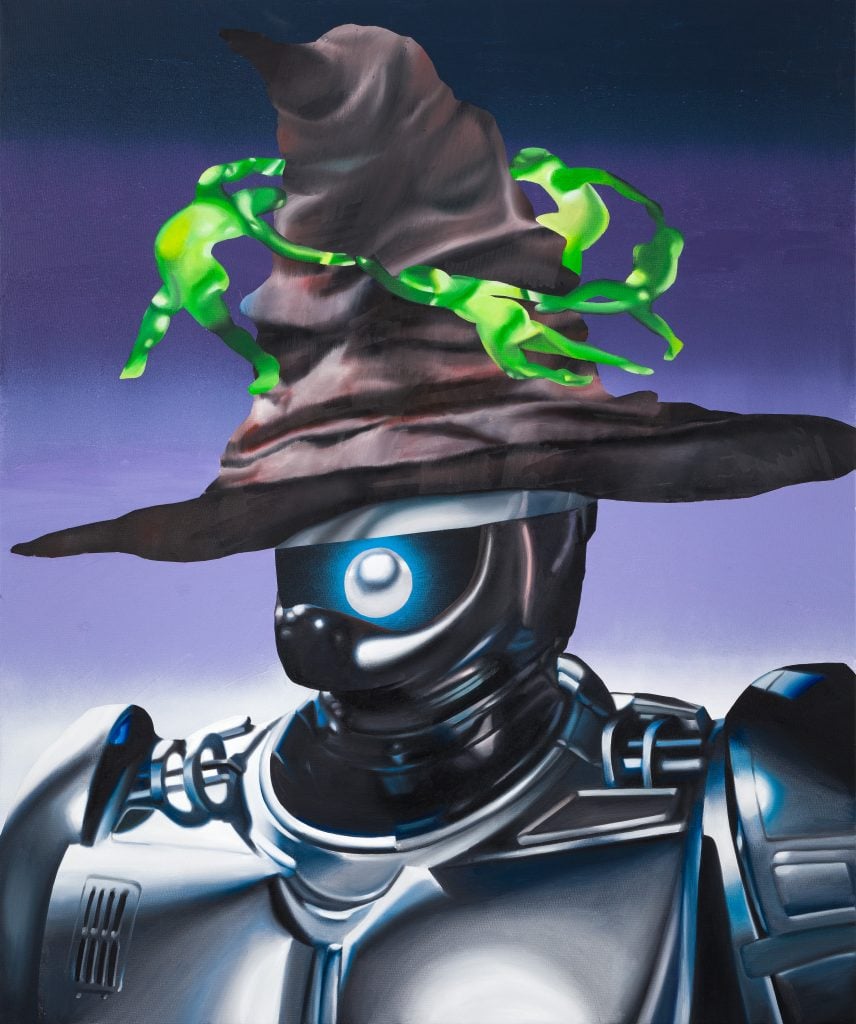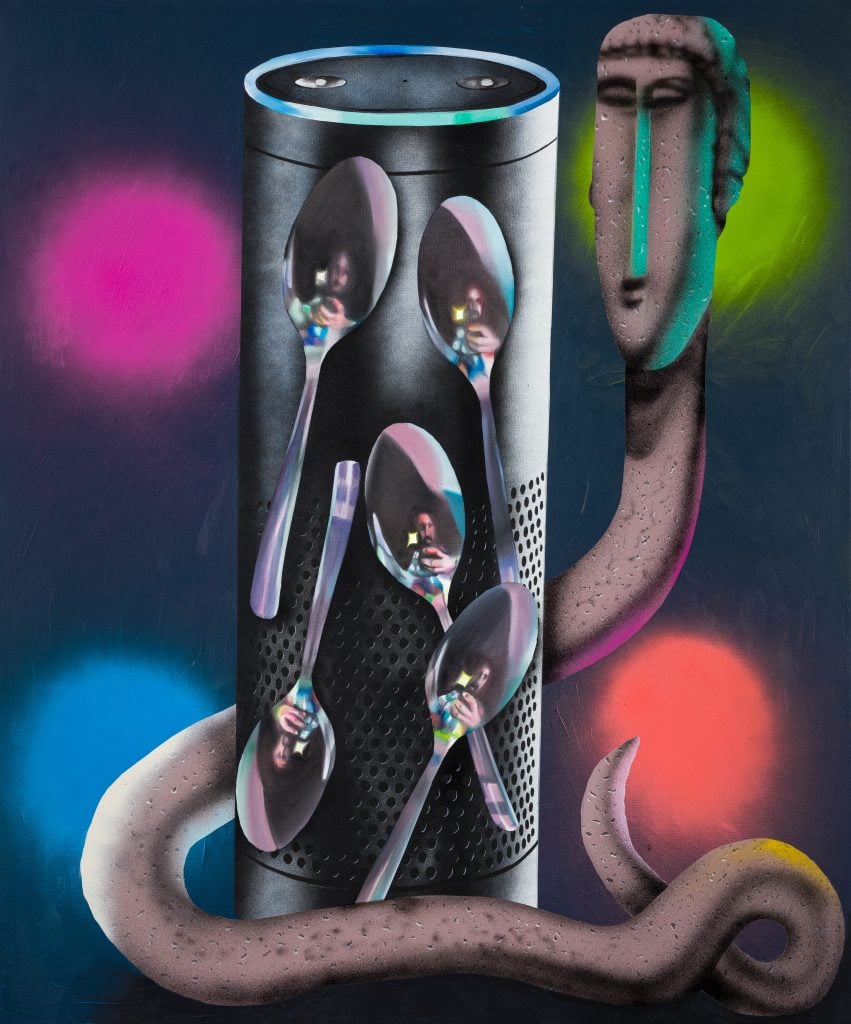Galleries
Artists Say Future Gallery Founder Michael Ruiz Stiffed Them on Payments for Work That He Never Even Told Them He Sold
Artists are using Instagram to alert collectors and urge them to get in touch.

Artists are using Instagram to alert collectors and urge them to get in touch.

Dorian Batycka

Future Gallery, founded in Berlin in 2008 by Michael Ruiz, is facing an escalating din of criticism from nearly a dozen current and former artists, who are accusing the gallery of withholding payment from the sale of art works, as well as inventory for artists it no longer represents. .
According to Estrid Lutz, a visual artist represented by Future Gallery between 2016 and 2018, the gallery remains in possession of about 40 to 50 of her works, which she said she has been trying to get back for three years. Fed up, she posted her account of the situation to Instagram on October 20, and several other Future artists and employees reached out to share similar experiences.
Artnet News emailed Ruiz on November 1 seeking comment on these allegations. Ruiz did not respond to the request, but since then he has been in touch with several of the artists owed money and inventory. He paid Lutz €8,390 for two works sold to unknown collectors. She maintains that she is owed for as many as 13 works.

Artist Estrid Lutz. Courtesy of the artist.
Lutz said that her relationship with Ruiz started to sour in 2018 after she discovered that her work had been sold to the Zabludowicz Collection without her knowledge. It was only after emailing Zabludowicz Collection manager Elizabeth Neilson that Lutz found out that Future Gallery had received payment of €3,500, which prompted Lutz to write to Ruiz demanding an explanation for the yearlong delay in disbursal.
“Michael acted surprised and said that he had only just received payment,” she said, “more than a year after the wire transfer was sent.”
Lutz also provided Artnet News with screenshots showing a work that had sold to collector Bjorn Stern in October 2018, a fact which she was only made aware of a year later, after Stern posted the work to Instagram.
Lutz said it was then that she decided to terminate her relationship with the gallery and asked for her remaining works in inventory to be returned to her studio.
“I have been asking for my works back for three years,” Lutz told Artnet News. “It was only after I made a public post on Instagram that I received a response from Ruiz.”
Artnet News received access to private group chats with artists, including Ruben Grilo, Brenna Murphy, Jaakko Pallasvuo, and Nicolas Pelzer, all of whom have described a similar pattern of behavior on the part of Ruiz.
“We all have issues,” one artist said. “He still owes me money for two works going on three years,” Pelzer chimed in. In an older chat, Grilo, whose show is currently on view at Future, added, “He has owed me money since 2017.”
According to Pallasvuo, who was represented by Future Gallery from 2013 to 2018, there were difficulties relating to delayed payments and poor communication from the very beginning. Not long after a 2015 solo show with the gallery, Pallasvuo—who was among the first to work with Ruiz—said that the gallery stopped responding to his emails in 2016. Pallasvuo said he told Ruiz he wanted to leave, but said that it was difficult to get his name taken off the gallery’s roster or off the website.
Like Lutz, Pallasuvo discovered sales had been made without his knowledge. “I found out from a collector who emailed me that they had bought a work of mine from Ruiz, which I had not been told about and had not been paid for,” he told Artnet News. “When I contacted the gallery, they told me that they thought I owed them a fairly high sum of money for production costs, and Ruiz said he intended to sell my work and keep 100 percent of the profits until this high sum was covered.”
Pallasvuo added that he never had a contract and said he had not made any such cost-sharing agreement to share such costs with the gallery. Most of the work was produced independently, with no funding from the gallery whatsoever.
“I asked for exact numbers and receipts for the sum that was mentioned in the email, but did not receive a breakdown,” Pallasvuo said. He proposed that the work he had made on his own be shipped back to his studio, and the work the gallery had produced be destroyed, so neither party could benefit from it financially. So far, he has received no response.
“To this day, I have no idea where the numerous artworks of mine the gallery held in their storage are—whether they are still in storage, sold without my knowledge, or simply destroyed,” Pallasvuo said.

Botond Keresztesi, Me, Myself, and I (2019), was shown in a 2020 show at Future Gallery, Berlin. Photo: David Biro. Courtesy of the artist.
Future Gallery started in 2008 as a new-media oriented project space in the living room of Ruiz and the director, Anne Betting, in Berlin’s Kreuzberg district. In 2013, it morphed into a commercial gallery situated in Mitte, dedicated to what its website describes as “the presentation of a new generation of artists fluent in prevailing everyday technologies, which they use to explore as well as comment on our increasingly screen-based reality.”
In 2018, the gallery expanded to Mexico City, a space it closed in 2020. During its peak, the gallery exhibited more than a dozen artists, including Kareem Lotfy, Katja Novitskova, Nicholas Riss, Carlos Sáez, Brad Troemel, Amalia Ulman, and Julie Villard & Simon Brossard.
The gallery now lists only a handful of names on its site: Ruben Grilo, Spiros Hadjidjanos, Femke Herregraven and Botond Keresztesi.
In September, Ruiz opened a new gallery in New York City, Calderón Ruiz, with a focus on Latinx artists, together with Nicole Calderón. The first exhibition, “Eagle and Serpent,” features works by Esteban Ramón Pérez and Jaime Muñoz. The gallery is situated in a sprawling 1,800-square-foot space located in the South Street Seaport district of Manhattan.
“Instead of paying his debts he opens a space in New York,” Lutz said. “This man has damaged my career, I’m appalled and want others to know what a nightmare it’s been to work with him.”